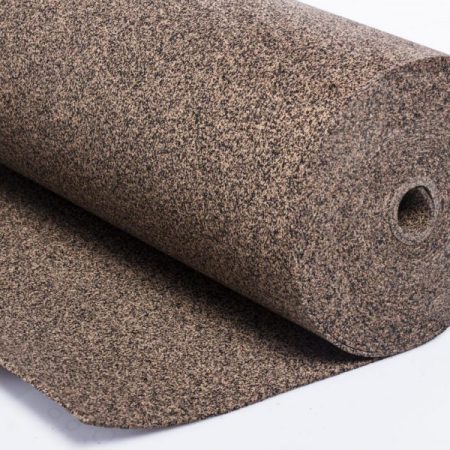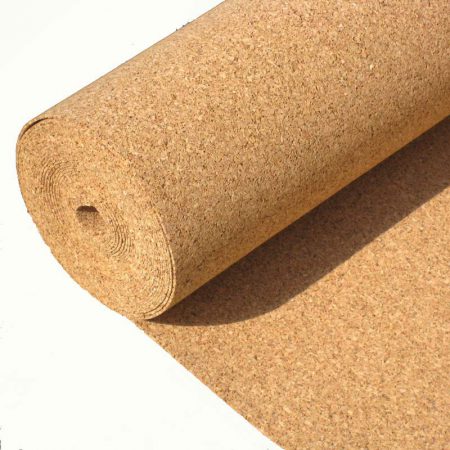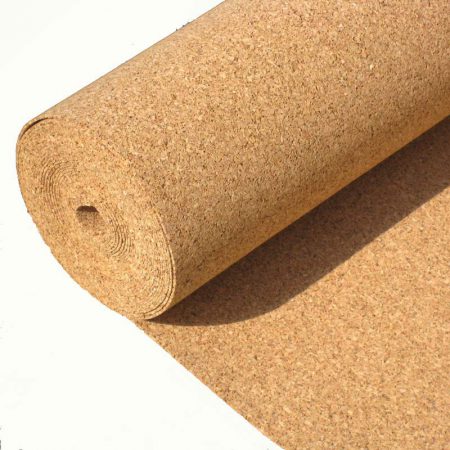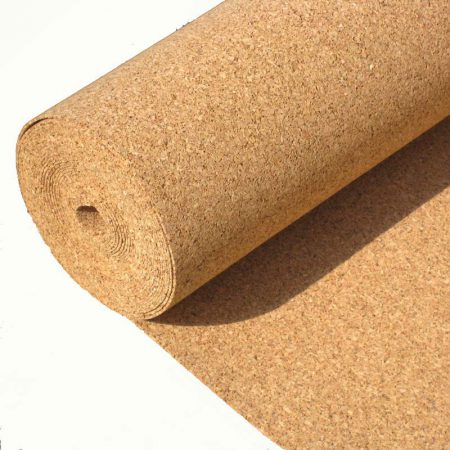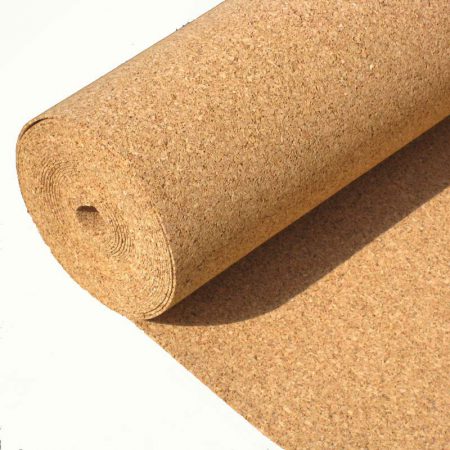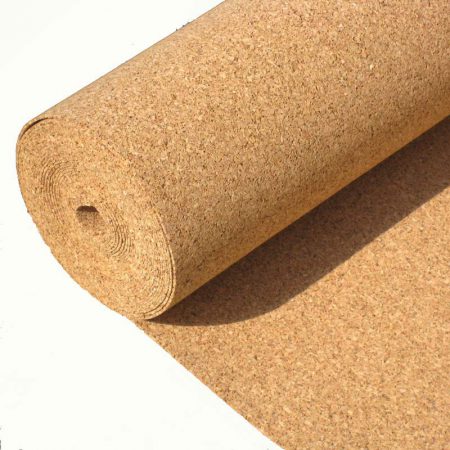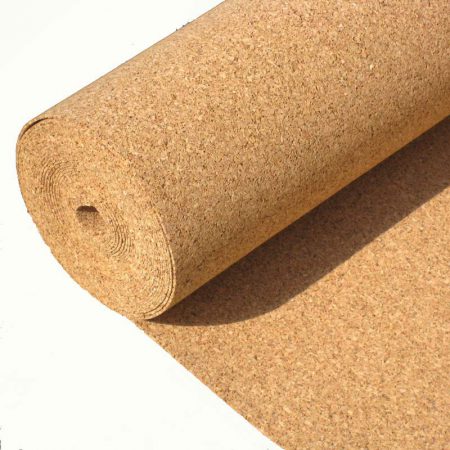Cork underlayment
Cork underlayment has great thermal and silencing properties, so no wonder you’re here looking at what we have to offer. Look through our cork underlays to choose the best one to meet your needs.
The properties of cork underlayment
If you want to silence the noise that’s coming from a certain room (maybe a recording studio or a kid’s room), install our cork underlay. At the same time it softens the floor so that any falls become less painful. Additionally it keeps the heat in the room. This, on the other hand, leads to another thing. You can save a lot of money that would normally be spent on heating. All these great properties of cork you can purchase at really low prices.
A good choice of cork underlayment
And if you still have any doubts whether cork underlay is the best choice, do not hesitate to consult our experts – they will gladly answer all your questions and together you can choose what is best for you.
Showing all 16 results
The cork insulating layer is a unique thermal insulation material.
Its thermal properties are impressive and with a thermal conductivity coefficient of 0.053 W/mK it is one of the elite flame-retardant insulation materials.
Equally important, cork maintains its thermal properties consistently over a wide temperature range, making it suitable for both cold winters and hot summers. It owes all this to its unique cellular structure, which cannot be reproduced artificially.
Cork fabric consists of many dead cells, and the spaces between them are filled with gas, the composition of which is similar to air and accounts for up to 90% of the material’s volume. Thanks to this unique combination, the cork perfectly protects the interior from heat loss. Another advantage is the fact that the material feels pleasantly warm and does not absorb heat from the human body, resulting in exceptional comfort when using the cork floor.
Soundproofing is another area where cork is superior to other materials. By using it as an acoustic underlay for the floor, the penetration of unwanted noise, noise and vibrations is significantly reduced. This is not only a treat for your ears, but also for peace of mind in your home. In addition, cork underlays effectively dampen footsteps and all other noises, which translates into improved living comfort. In practice, this means that by using cork pads you will create an oasis of calm at home, regardless of whether it is a cold winter or the hustle and bustle of city life.
Preparation for laying a cork underlayment on the floor
First of all, it is necessary to complete the installation of natural wall coverings in living spaces before starting to install them on floors to ensure that they are suitable.
Step 1: Leveling: for straight and stable floors
Prepare to level the floors to ensure stability. Apply a finishing mortar to all floor surfaces where you plan to place the cork rolls. Polish and clean your floor surfaces in the best possible quality.
Step 2: Measure the floor area
Measure the floor surface with a measuring device and adjust which sections of underlayment you need.
Step 3: Place vapor barrier film on and align.
Step 3: Install the cork support rollers
After measuring the dimensions and laying the film, laying the cork underlay rolls on the floor is very easy. Simply unroll the rolls and stabilize them on the floor.
Step 4: After laying the cork underlayment
At this stage there are several methods depending on the parquet selected. If you want to install floating panels, simply place them on the floor, paying attention to the appropriate dimensions. However, when it comes to laying glued parquet tiles on a cork substrate, you should apply a layer of glue that is tailored to the cork material.
Differences between cork pad and cork roll.
The main difference lies in the different density of both products. The cork back has a lower density than the cork roll. Cork underlayment is generally mainly used for floating wooden floors. However, cork rolls are used for thermal and sound insulation of walls due to their denser material.
Many cork users also often combine it with decorative wall cork in panels. This way you can achieve the function of a pin board and atmospheric decoration. Due to its density, the roll, in contrast to the base, can also be used to cut suitable cork panels without a frame.
What often connects a cork pad and a cork roll is, for example, the use of both materials in unusual applications, such as furniture paneling, car or van insulation or vibration insulation for a washing machine or even thermal insulation protection for gas and electric ovens in the kitchen.
A rare function is also the transport of glass materials such as glass, e.g. The cork base and cork roll can also be used to cut your own cork coasters for hot dishes or the base material for coasters for cold and hot drinks that we sometimes see in cafes and pubs.
Both the underlayment and the cork roll can be used under underfloor heating to prevent downward heat transfer and to allow the underfloor heating to transfer more heat under the floor.
Cork underlayment is a natural material that is used in various areas, including as an underlayment for floors. Let’s compare cork backing with some common synthetic materials used for the same purpose such as: B. the polyethylene foam base, the polyurethane foam base and the rubber base.
Material:
Cork base: natural material obtained from the bark of the cork oak. It is ecological and biodegradable.
Polyethylene foam: A synthetic material made from polyethylene, a popular plastic.
Polyurethane foam: The plastic is created through the chemical reaction of polyols with isocyanates.
Rubber: A synthetic rubber material usually made of elastomers such as synthetic rubber or thermoplastic.
Insulating properties:
Cork underlay: Absorbs noise well, ensuring effective sound and heat insulation.
Polyethylene foam: Provides good thermal insulation, but its soundproofing properties may be lower compared to cork.
Polyurethane foam: It has good heat and sound insulation properties, but its lifespan is shorter than that of a cork underlay
Rubber: It is flexible, which translates into good insulating properties in terms of both sound and heat.
Flexibility:
Cork base: Flexible and springy, making it pleasant to walk on.
Polyethylene foam: Flexible, but possibly less flexible than cork.
Polyurethane foam: Very flexible, allowing for even load distribution.
Rubber: Flexible and springy, providing comfort when walking.
Durability:
Cork Backing: It is more durable and abrasion resistant than some synthetic materials.
Polyethylene foam: abrasion-resistant and therefore durable.
Polyurethane foam: Has good durability and strength.
Rubber: It is durable and wear-resistant.
Ecology:
Cork underlay: It is ecological as it is obtained from renewable sources.
Polyethylene foam: The production of polyethylene can cause pollution, but the material is recyclable.
Polyurethane foam: Chemical emissions may occur during production, but some types of polyurethane foam are recyclable.
Rubber: Although rubber production can cause pollution, it is recyclable.

